Industrial Control PCB Suppliers
South-Electronic
At South-Electronic, we specialize in providing high-quality industrial control PCB designed to ensure stable, long-lasting performance in a variety of demanding environments.
Why Choose South-Electronic For Your Industrial Control PCB?
Choosing South-Electronic means working with experts who produce top-quality industrial control PCB for a wide range of applications.
Our team has extensive industry experience and provides competitively priced PCB without compromising on quality. We are committed to providing quality service from start to finish, ensuring your satisfaction throughout your project.
-
Global Compliance
Your global reach demands quality and compliance.
Our industrial control PCB meets international standards, making them suitable for a wide range of applications across the globe, no matter where your business operates. -
Superior Quality Assurance
Your trust in our quality is our top priority.
Through advanced testing procedures and stringent quality control measures, we ensure that every PCB you receive will perform reliably, even under the most demanding conditions in industrial control environments. -
Comprehensive Support
With us, your journey will be smooth from start to finish.
From prototype to production, our expert team is here to provide continuous support, ensuring a smooth and efficient process for all your projects. -
Flexible Manufacturing
Your needs drive our flexibility.
Our manufacturing capabilities are highly adaptable and can handle orders of any size, from small batches to large-scale production, while maintaining the highest quality standards. -
Strategic Supply Chain Efficiency
Your satisfaction is enhanced by our transparency.
Our optimized supply chain processes include real-time tracking and dedicated customer service, improving overall customer satisfaction and operational transparency.
Related Project We had Done
Customer Reviews
Common Questions
Most Popular Questions
Send us a message
The more detailed you fill out, the faster we can move to the next step.
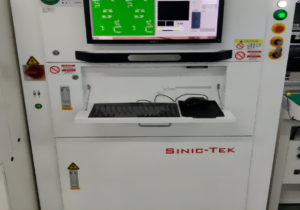
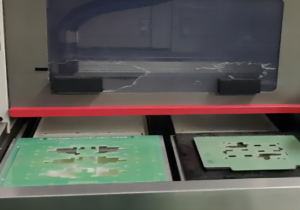
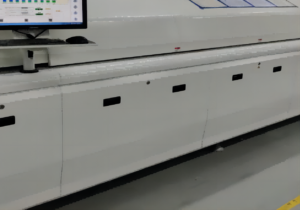
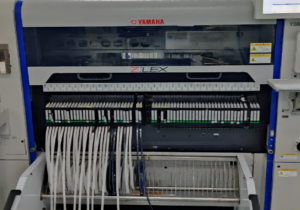
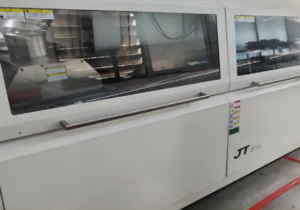
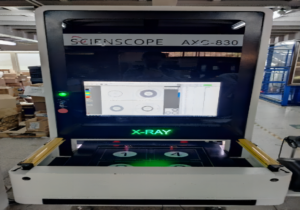

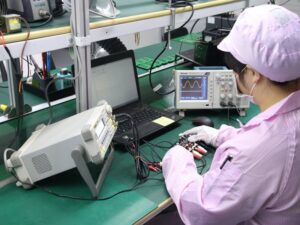

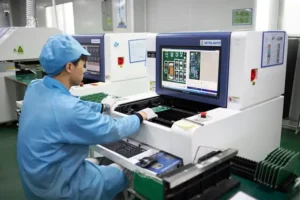



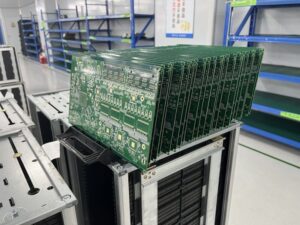

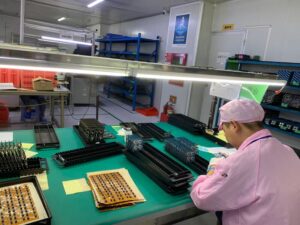



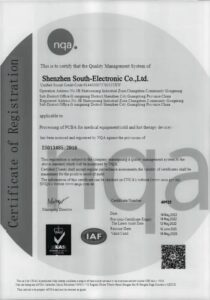
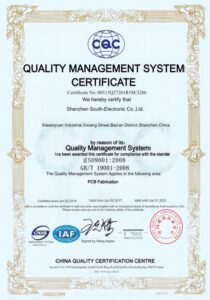







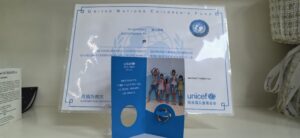

The Complete Guide For Industrial Control PCB
Contect
Chapter 1
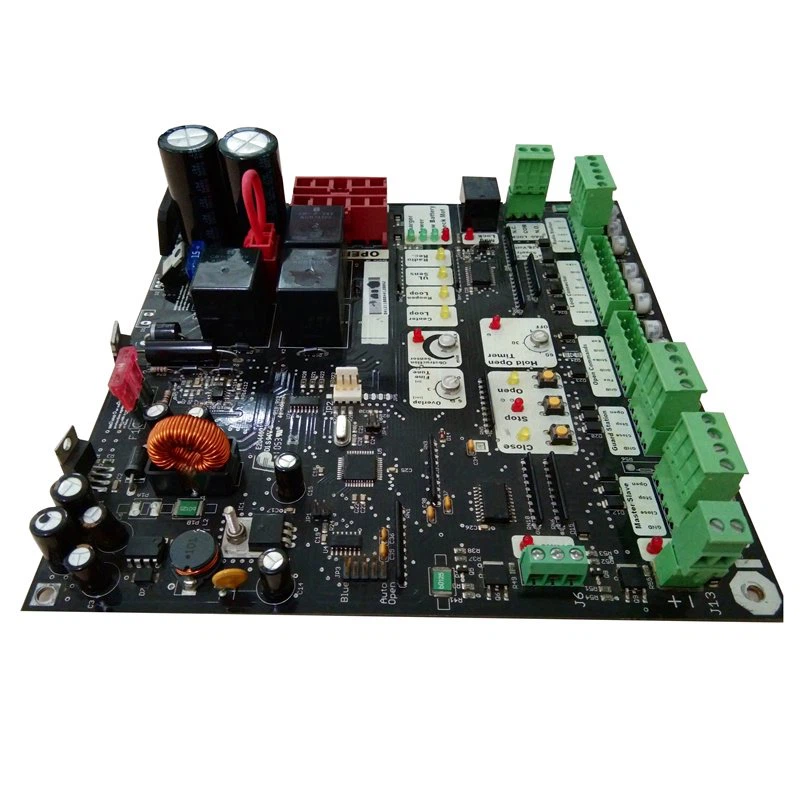
Introduction to Industrial Control PCB
Industrial control PCB is the backbone of industrial systems. The specialized PCB not only support the complex functionality of today’s automation and control technologies, but it also ensure its operational reliability in harsh environments. As the industry moves toward more automated and technologically advanced systems, the need for rugged and efficient industrial control PCB becomes even more critical.
Industrial control PCB is different from standard PCB, it’s designed to handle higher power and more stringent operational requirements. PCB is engineered to handle and withstand the extreme conditions found in industrial environments, such as high temperatures, vibrations, and continuous operation. The reliability of these systems is critical, as it is often the backbone of critical operations such as manufacturing processes, energy distribution, and automation.
In this ultimate guide, you’ll learn about all the different parts that make up industrial control boards, the materials they’re made of, design considerations, and the rigorous manufacturing processes that ensure they’re high quality and have a long lifespan. In addition, I’ll provide you with some insights into how to choose the right supplier for your industrial control boards, a big decision that can have a huge impact on the efficiency and reliability of your industrial operations. Along the way, I’ll also talk about South-Electronic, a leader in the field whose commitment to quality and innovation really sets the standard for the industry.
After reading this guide, you will know more about industrial control PCB than 99% of the people you meet. You will be able to make better choices to help your industrial system perform at its best and never let you down.
Chapter 2
Basics of Industrial Control PCB
Definition and Importance
What is Industrial Control PCB?
Industrial control PCB (Printed Circuit Board) is specially designed circuit board, to operate reliably in harsh industrial environments. PCB is the key of control systems that manage and automate industrial machinery and processes. The role is critical to ensuring these systems operate efficiently, safely, and continuously, which is essential to maintaining industrial productivity and operational integrity.
Why it is Important?
Industrial Control PCB plays a key role in a variety of sectors, including manufacturing, automotive, energy, and more.
- Precision and Automation: Automating tasks that require high precision and repeatability, thereby reducing human error and increasing efficiency.
- Durability and Reliability: Ensuring that systems can operate without failure under demanding conditions, which is critical in environments where downtime can result in significant financial losses.
- Adaptability: Facilitating rapid changes in production lines and processes to adapt to new technologies or production demands.
Key Differentiators
How Does Industrial Control PCB Stand Out?
Enhanced Durability
- Materials: Industrial Control PCB uses materials that are able to withstand extreme environmental conditions, such as heat, moisture, and corrosive chemicals.
- Construction: The PCB typically feature thicker copper layers and a rugged substrate to withstand the stresses of industrial operations.
Complex Design Capabilities
- Integration: Capable of integrating complex circuit designs that include advanced microprocessors, sensors, and other critical components essential for controlling sophisticated industrial machinery.
- Layout: Designed to maximize space and functionality, often using multi-layer configurations that support dense component layouts while managing heat and signal integrity effectively.
Superior Thermal Management
- Heat Dissipation: They incorporate advanced cooling technologies such as heat sinks, thermal vias, and sometimes active cooling systems to manage the heat generated by high-power components.
- Thermal Stability: Materials and designs are chosen to ensure stability across a range of operational temperatures, preventing thermal expansion issues that can lead to PCB failure.
Regulatory Compliance
- Certifications: Comply with stringent industry standards such as IPC-6012 Class 3, ensuring they meet high reliability and quality benchmarks.
- Safety Standards: Safety Standards: Compliance with safety standards that are crucial in industrial applications ensures that the PCB does not pose any risks during operation.
Advanced Testing and Quality Assurance
- Rigorous Testing: Subjected to extensive testing protocols such as in-circuit tests, thermal cycling, and stress tests to ensure they can withstand industrial environments.
- Quality Control: High standards of quality control are maintained throughout the manufacturing process to prevent any defects that could lead to operational failures.
In Summary
Industrial control PCB is designed and manufactured to ensure it can operate in harsh industrial environmental conditions while maintaining safety, reliability, and functionality. Understanding these basics is essential for anyone involved in the development, procurement, or management of industrial electronic systems.
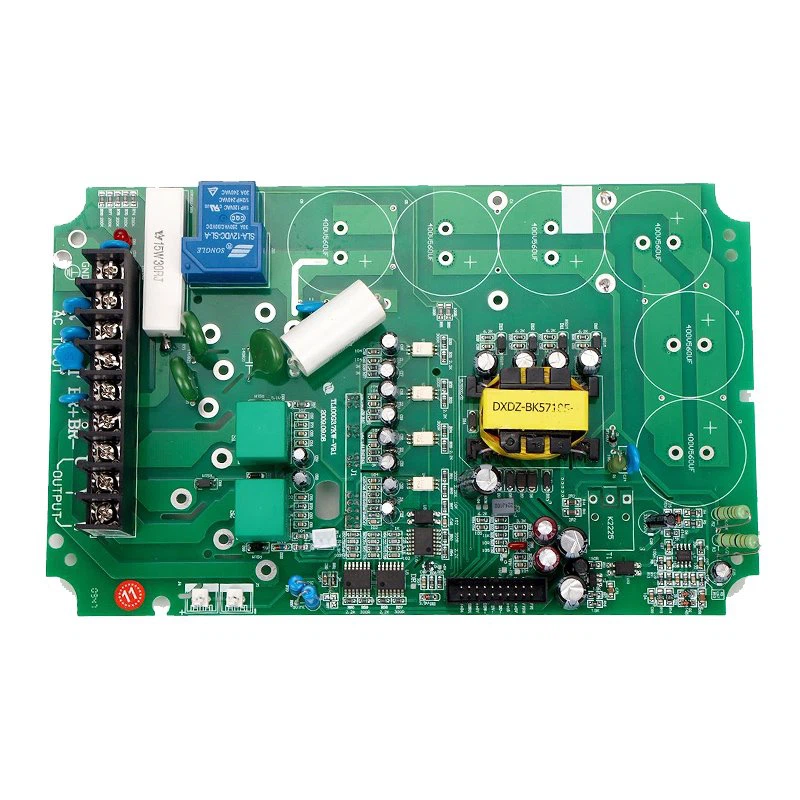
Chapter 3
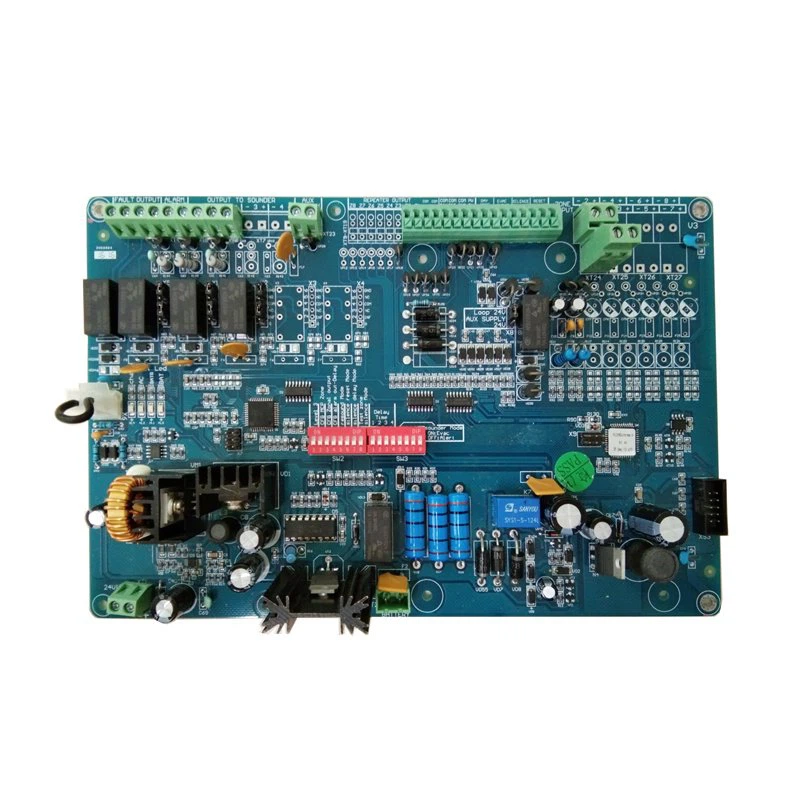
Components and Architecture of Industrial Control PCB
Industrial control PCB is complex assemblies that contain a variety of components specifically designed to handle demanding industrial tasks. Here’s an in-depth look at the typical components found on the PCB and how they integrate into powerful industrial control systems.
Key Components of Industrial Control PCB
Microprocessors and Microcontrollers
- Functionality: Serve as the central processing unit (CPU) of the PCB, executing the control software that manages the operations of industrial machines.
- Integration: Connected to various input/output interfaces that allow them to receive sensor data and send commands to actuators or other machinery components.
Interface Modules
- Types: Can include digital and analog I/O modules, communication modules like Ethernet or CAN bus, and user interface modules such as touch screens or buttons.
- Role: Facilitate communication between the control system and machinery, sensors, or network systems, ensuring that data is accurately exchanged and processed.
Power Regulators and Converters
- Purpose: Ensure that all components on the PCB receive stable and suitable power supply regardless of external power fluctuations.
- Features: Often include features for power isolation and filtering to protect sensitive components from spikes and noise in industrial power supplies.
Memory Components
- Types: Include both volatile RAM for temporary data storage and non-volatile memory for storing firmware, configuration settings, and application data.
- Function: Critical for data logging, configuration retention, and ensuring that control software and operating parameters can be loaded swiftly upon system startup or reset.
Sensors and Actuators Interface
- Connectivity: Interface circuits connect to a variety of sensors (temperature, pressure, etc.) and actuators (motors, valves).
- Importance: These interfaces convert and condition signals from sensors and to actuators, ensuring accurate and reliable data flow and control actions.
Signal Conditioning Circuits
- Requirement: Necessary for preparing sensor signals for processing (amplifying, filtering, and converting analog signals to digital).
- Design: Designed specifically for the type of sensor and the environmental conditions expected in industrial settings.
Safety and Reliability Features
- Components: May include watchdog timers, redundant circuits, and fault detection logic to monitor system integrity and react to potential faults or failures.
- Purpose: Enhance the safety, reliability, and uptime of industrial control systems, critical in environments where failure can lead to significant operational disruptions.
Integration into Robust Industrial Control Systems
- Systematic Layout: The components are laid out in a systematic manner to optimize signal integrity and minimize interference, crucial in environments with high electromagnetic interference (EMI).
- Modular Design: Many industrial control PCBs are designed modularly, allowing for easier maintenance and scalability. This modularity enables quick replacement or upgrading of modules without disrupting the entire system.
- Environmental Protection: Components and the entire PCB are often encased in rugged enclosures that protect against environmental challenges like dust, moisture, and chemical exposure, ensuring long-term reliability and functionality.
- Interconnectivity: Given the complexity and need for integration with other industrial systems, the PCB is equipped with numerous connectivity options to ensure seamless communication across different platforms and systems within a facility.
Conclusion
The components and architecture of Industrial Control PCB is tailored to meet the unique challenges of industrial environments. Understanding these elements is essential for designing, implementing, and maintaining effective and reliable industrial control systems that can withstand the rigors of industrial operations while delivering optimal performance.
Chapter 4
Material Considerations for Industrial Control PCB
The materials used in Industrial Control PCB are pivotal in determining their performance, durability, and reliability in industrial settings. Here’s an in-depth look at the key material choices and how they influence the functionality of these specialized PCB.
Common Materials Used in Industrial Control PCB
FR4
- Description: FR4 is the standard material for most PCB, including those used in industrial controls. It consists of a woven fiberglass cloth with an epoxy resin binder.
- Attributes: It offers good mechanical strength, flame resistance, and excellent electrical insulation.
- Limitations: While FR4 is sufficient for many applications, its thermal conductivity is relatively low, which can be a limiting factor in high-temperature environments.
Metal-Core PCB (MCPCB)
- Materials: Typically made with an aluminum core, but can also include copper for higher thermal conductivity.
- Advantages: MCPCB is excellent for thermal management, as the metal core helps to dissipate heat more effectively, protecting sensitive components from heat-induced failure.
- Applications: Ideal for high-power applications where heat is a significant concern, such as power converters or drives.
High-Temperature Laminates
- Types: Materials like polyimide are used for PCB that must operate in high-temperature environments beyond what FR4 can handle.
- Benefits: Polyimide and similar materials can withstand higher temperatures without degrading, making them suitable for industrial applications involving extreme heat.
Flexible PCB Materials
- Materials: Polyimide is also commonly used for flexible PCB due to its durability and flexibility.
- Functionality: Flexible PCB is useful in industrial applications where the PCB must conform to a specific shape or endure bending and movement without failure.
Impact of Material Choice on PCB Performance and Lifespan
Thermal Management
- Importance: Proper thermal management is critical in maintaining the functionality and longevity of PCB components. Materials with better thermal conductivity help dissipate heat more effectively, thereby reducing the risk of overheating and extending component life.
- Material Choices: Aluminum and copper in MCPCB are preferred in scenarios where heat dissipation is a critical concern.
Mechanical Strength and Durability
- Considerations: Industrial environments often pose physical stresses such as vibration, impact, or constant mechanical loading.
- Material Selection: Robust materials like thick copper layers or specialized high-strength laminates can provide the necessary durability to withstand these conditions.
Chemical and Moisture Resistance
- Challenges: Exposure to harsh chemicals, oils, or moisture is common in industrial settings.
- Solutions: Using materials that are chemically resistant and moisture-proof can prevent corrosion and other moisture-related failures, enhancing the PCB’s reliability.
Electrical Performance
- Requirement: Industrial Control PCB often need to handle higher currents and voltages.
- Impact of Materials: The dielectric properties of the PCB material affect its ability to insulate between layers and traces, preventing electrical shorts and ensuring reliable operation.
Conclusion
Selecting the right materials for Industrial Control PCB is crucial in ensuring they meet the required performance standards and withstand the harsh conditions typical of industrial environments. By understanding the properties and benefits of different materials, designers can tailor their PCB to the specific needs of the application, enhancing both performance and lifespan. This material-centric approach is fundamental in engineering PCB that are not only functional but also durable and reliable over time.

Chapter 5
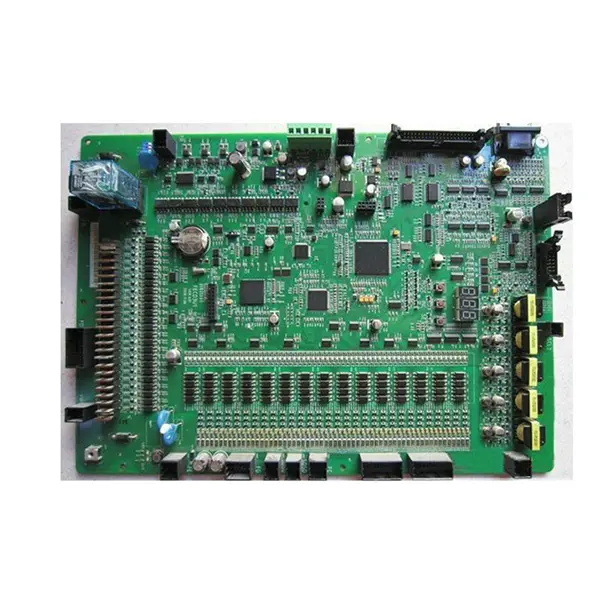
Design and Layout Strategies for Industrial Control PCB
For industrial electronics, the design and layout of PCB are critical to ensuring that the systems operate reliably and efficiently under harsh conditions. Below, we’ll explore the key design considerations and layout strategies that are vital for industrial control PCB.
Key Design Considerations
Robust Component Selection
- Durability and Quality: Components must be chosen not only for their functionality but also for their ability to withstand extreme temperatures, vibrations, and corrosive environments typical in industrial settings.
- Specifications: High-grade, industrial-strength components with extended temperature ranges and higher tolerance to physical stress are preferred.
Enhanced Thermal Management
- Heat Dissipation: Effective thermal management is essential to prevent overheating, which can lead to component failure. This includes the use of heat sinks, thermal vias, and proper spacing of heat-generating components.
- Thermal Relief: Incorporating thermal relief pads around heat-sensitive components can prevent heat transfer from soldering processes that might damage the component.
Redundancy
- Fail-safes: Incorporating redundancy in critical signal paths and functional modules can ensure that if one pathway fails, another can take over, maintaining the system’s operational integrity.
- Testing for Redundancy: Regular testing protocols should be established to ensure redundancies function as intended when required.
Layout Optimization Strategies
Minimizing Electrical Noise
- Signal Integrity: Layout strategies must prioritize signal integrity, especially in environments with high electromagnetic interference (EMI). This can be managed by proper routing, shielding, and grounding techniques.
- Isolation: Separating noisy or high-frequency components from sensitive analog signals is crucial to prevent cross-talk and interference.
Effective Use of Space
- Component Placement: Strategic placement of components can optimize space and improve the overall layout efficiency. This includes placing related components close together to minimize trace lengths and reduce potential interference.
- Layer Management: Utilizing multi-layer PCB can help manage space efficiently. Power and ground planes can be used in the inner layers to provide shielding and reduce EMI.
Heat Accumulation Mitigation
- Layout Design: Designing the layout to spread out heat-generating components can prevent localized heat accumulation.
- Simulation Tools: Using CAD and thermal simulation tools can help predict heat flow and distribution, allowing designers to make informed decisions about component placement and cooling mechanisms.
Ruggedization
- Conformal Coating: Applying a conformal coating can protect the PCB from moisture, dust, and chemical exposure, which are common in industrial environments.
- Vibration Resistance: Design techniques such as through-hole mounting and the use of stiffeners can provide additional mechanical strength to withstand vibrations and shocks.
Importance of Design Verification
- Prototyping and Testing: Early prototyping and rigorous testing under simulated environmental conditions can help identify potential design flaws before full-scale production.
- Iterative Design Process: Design should be an iterative process, where feedback from testing phases is used to continually improve the PCB design for better performance and reliability.
Conclusion
The design and layout of Industrial Control PCB require meticulous attention to detail and a deep understanding of the environmental challenges they will face. By adhering to these strategic design principles and layout optimizations, engineers can significantly enhance the reliability and efficiency of industrial control systems, ensuring they perform optimally even in the most demanding conditions.
Chapter 6
Manufacturing and Quality Control for Industrial Control PCB
The manufacturing and quality assurance of Industrial Control PCB are vital to ensure that these components can withstand the demanding conditions of industrial environments while maintaining high reliability and efficiency. Here’s a detailed look at the manufacturing process and the quality control measures that are implemented to meet industrial standards.
Manufacturing Process of Industrial Control PCB
Design Validation and Pre-production Engineering
- Design Review: Before manufacturing begins, the PCB design undergoes a thorough review to ensure it meets all specifications and is optimized for manufacturability.
- DFM (Design for Manufacturability) Checks: This step involves analyzing the PCB design to ensure it is compatible with manufacturing capabilities and that it adheres to industry standards.
Material Selection and Procurement
- High-Quality Materials: Materials used in industrial control PCB, such as high-TG substrates and heavy copper, are selected for their ability to endure extreme conditions.
- Supplier Vetting: Suppliers of raw materials are rigorously vetted to ensure they provide high-quality materials that comply with industry specifications.
PCB Fabrication
- Layer Construction: Multi-layer PCB is common in industrial controls for their enhanced functionality and compact size. Layers are carefully aligned and laminated under high pressure and temperature.
- Circuit Patterning and Etching: Advanced techniques like laser direct imaging (LDI) are used for precise patterning of circuits, ensuring accuracy and consistency.
Component Assembly
- Surface Mount Technology (SMT): Most industrial control PCB utilize SMT for component placement, which allows for more components on both sides of the PCB and provides better performance characteristics.
- Through-Hole Technology: For components requiring stronger mechanical bonds, through-hole technology is employed, especially for connectors and heavy-duty components.
Soldering and Reflow
- Lead-Free Soldering: Complying with RoHS (Restriction of Hazardous Substances) standards, lead-free soldering materials are used to minimize environmental impact and enhance safety.
- Reflow Soldering: Ensures a reliable solder joint by carefully controlling the temperature profile during the soldering process.
Quality Control Measures
Automated Optical Inspection (AOI)
- Post-Solder Inspection: Immediately after soldering, AOI systems are used to check for solder quality, alignment, and the presence of any defects like shorts or opens.
X-Ray Inspection
- Layer Inspection: For multi-layer PCB, X-ray inspection is critical to identify any potential internal defects such as misalignments or hidden solder issues.
In-Circuit Testing (ICT)
- Functional Verification: Each PCB is tested for functionality by simulating operational conditions to ensure all components and circuits perform as expected.
Environmental Stress Testing
- Thermal and Vibration Tests: PCB is subjected to thermal cycling and vibration tests to simulate the harsh industrial environments they will operate in. This testing ensures that the PCB can withstand temperature variations and mechanical stresses.
Final Quality Assurance
- Quality Checks: Before shipping, a final series of quality checks are conducted to ensure each PCB meets all technical and functional specifications.
- Certifications: Compliance with certifications such as ISO 9001 for quality management and IPC-A-600 for PCB acceptability ensures that the PCB is manufactured to the highest standards.
Conclusion
The manufacturing and quality control processes for Industrial Control PCB are designed to ensure that these critical components not only meet but exceed the rigorous standards required for industrial applications. By implementing stringent manufacturing protocols and comprehensive quality checks, manufacturers can provide PCB that offer unmatched reliability and performance in any industrial setting.
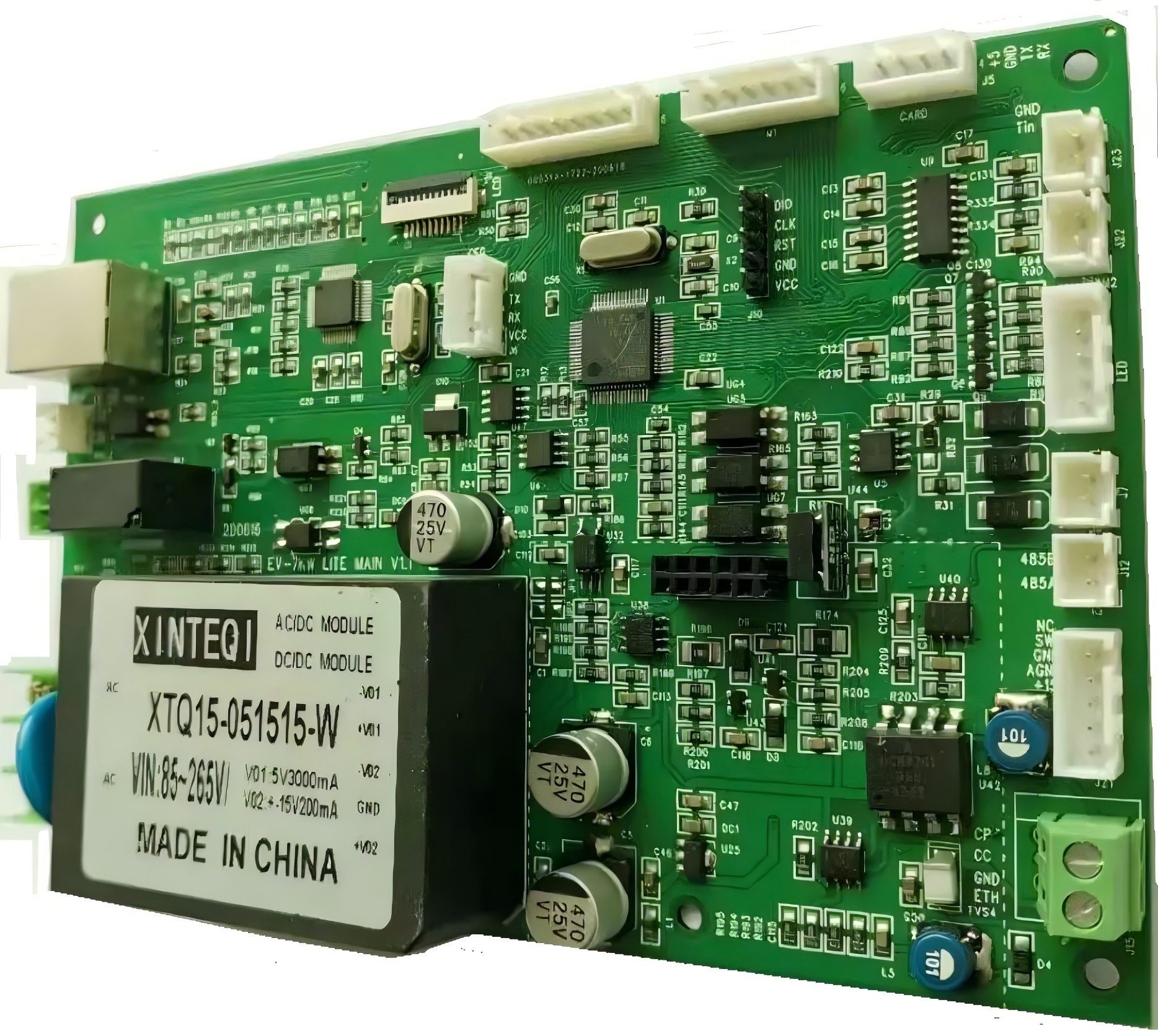
Chapter 7
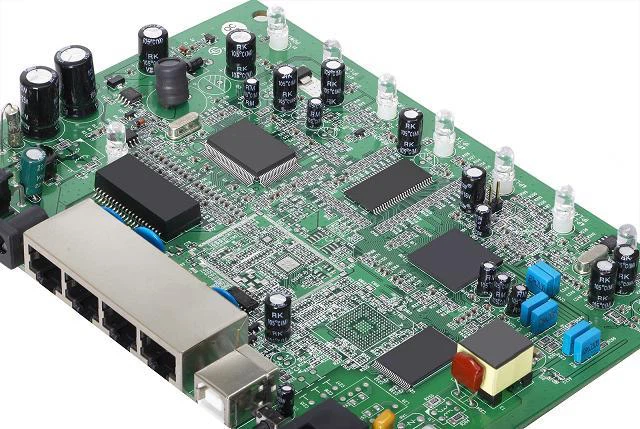
How to Choose the Right Industrial Control PCB Supplier
Choosing a supplier for industrial control PCB involves several critical considerations that directly impact the performance and reliability of your industrial systems. Here’s what to look for and how South-Electronic meets these criteria:
Key Factors to Consider
Manufacturing Capabilities
- Advanced Facilities: Ensure the supplier has state-of-the-art manufacturing facilities that can handle the complexity of industrial control PCB.
- Technology Adoption: Check whether the supplier uses the latest PCB manufacturing technologies, which are crucial for producing high-quality boards that meet modern demands.
Compliance with Industry Standards
- Certifications: Look for suppliers that hold relevant industry certifications such as ISO 9001 for quality management systems and IPC-A-600 for PCB manufacturing and assembly standards.
- Regulatory Compliance: It’s essential that the supplier adheres to international safety and quality standards, ensuring that the PCB are suitable for global industrial applications.
Quality Assurance Processes
- Testing Protocols: Verify that the supplier has robust testing protocols in place, from initial design checks to final quality assurance, to ensure each PCB is up to the standards required for industrial use.
- Consistency: Consistency in manufacturing and quality assurance is key to preventing failures in the field. Consistent quality means fewer disruptions and lower maintenance costs.
Supply Chain Robustness
- Supply Chain Management: Evaluate the supplier’s ability to manage a global supply chain, which is critical for timely deliveries and handling supply disruptions.
- Vendor Relationships: Strong relationships with raw material vendors are important to ensure material quality and availability.
Technical Support and Customer Service
- Pre and Post-Sale Support: Good suppliers provide comprehensive support, helping with design, implementation, and troubleshooting post-deployment.
- Communication: Effective communication channels for handling queries and problems swiftly are essential.
How South-Electronic Stands Out
Advanced Manufacturing and Technology
- South-Electronic prides itself on its advanced manufacturing facilities equipped with cutting-edge PCB production technologies, ensuring high precision and quality in every PCB.
Commitment to Standards and Quality
- South-Electronic maintains numerous certifications, including ISO 9001 and IPC-A-600, demonstrating their commitment to international quality and safety standards.
- Rigorous testing protocols are in place to ensure that every PCB shipped meets stringent quality criteria.
Supply Chain Excellence
- With an optimized supply chain and strong vendor relationships, South-Electronic ensures reliable material quality and prompt delivery schedules, even in demanding circumstances.
Unmatched Customer Support
- South-Electronic offers comprehensive technical support, assisting clients from the design phase through to post-sale service, ensuring every customer finds the perfect solution for their needs.
Conclusion
Choosing the right PCB supplier for industrial control applications is about much more than finding the lowest cost; it’s about finding a partner who can consistently deliver high-quality products and robust support. South-Electronic exemplifies these attributes, making them a leading choice for businesses seeking reliable industrial control PCB solutions. By aligning with suppliers like South-Electronic, you ensure that your industrial operations are supported by quality, reliability, and excellent service.
Chapter 8
Testing and Verification of Industrial Control PCB
Overview
Industrial Control PCB is subjected to rigorous testing protocols to ensure they perform reliably under real-world industrial conditions. These tests are designed to verify both the functionality and durability of the PCB, emphasizing their ability to operate safely and effectively in challenging environments.
Standard Testing Protocols
Electrical Testing
- In-Circuit Testing (ICT): ICT is conducted to check for shorts, opens, resistance, capacitance, and other electrical characteristics to ensure components are correctly installed and functioning.
- Functional Testing: Simulates operating conditions to verify that the PCB performs as designed under the specific inputs and outputs it will encounter in actual use.
Environmental Testing
- Temperature Cycling: Subjects the PCB to extreme temperatures to ensure it can withstand thermal stresses. This test helps identify potential failures caused by material expansion and contraction.
- Thermal Shock Testing: Rapidly changes temperatures to test the robustness of component solder joints under thermal stress.
Vibration and Shock Testing
- Vibration Testing: Ensures that the PCB can handle the vibrations typically found in industrial settings without loosening components or causing solder joint failures.
- Shock Testing: Tests the PCB’s ability to withstand sudden impacts or movements, which are common in many industrial applications.
Humidity Testing
- High Humidity Exposure: Exposes the PCB to high levels of humidity to ensure that moisture does not lead to corrosion or other failures, particularly important in outdoor or harsh industrial environments.
Chemical Resistance Testing
- Chemical Exposure: PCB is exposed to chemicals they might encounter in their operational environment to verify that they will not degrade or malfunction due to chemical interactions.
Role of Rigorous Testing in Maintaining Standards
Reliability Assurance
- Preventing Failures: Rigorous testing helps identify and mitigate potential failure points before the PCB is deployed in the field, ensuring that they are reliable over their expected lifespan.
- Continuous Improvement: Feedback from testing results leads to design improvements, enhancing the reliability of future PCB iterations.
Safety Standards Compliance
- Adhering to Regulations: Tests ensure compliance with international safety standards, such as those set by the IEEE, UL, or IPC, which are critical for maintaining legal and safety standards in industrial applications.
- Protecting Assets and Personnel: By ensuring that PCB can withstand environmental and operational stresses, testing helps prevent accidents and system failures that could endanger human lives and capital assets.
Quality Control
- Benchmarking: Testing sets benchmarks for quality and performance, providing a measurable standard that PCB must meet to be considered viable for industrial use.
- Quality Assurance: Through a systematic approach to testing, manufacturers can guarantee that every PCB shipped meets stringent quality criteria, supporting robust quality control processes.
Conclusion
Testing and validation are integral to the manufacturing process of Industrial Control PCB, serving as the cornerstone of quality assurance and reliability. These tests ensure that the PCB can not only meet but exceed the rigorous demands of industrial environments, maintaining high reliability and strict safety standards. This comprehensive approach to testing is what allows industrial control systems to operate effectively, reducing downtime and enhancing overall operational efficiency.

Chapter 9

Maintenance and Lifespan Optimization for Industrial Control PCB
Maintaining industrial control PCB effectively is crucial for maximizing their operational lifespan and ensuring reliability in industrial settings. Here’s a comprehensive guide on maintenance practices and troubleshooting tips.
Maintenance Guidelines
Regular Cleaning
- Purpose: Removes dust, debris, and corrosive substances that can accumulate on PCB and cause short circuits or corrosion.
- Method: Use compressed air for dust and non-abrasive, electro-safe cleaning solvents for grime. Ensure the PCB is powered down and fully dry before restarting operations.
Routine Inspections
- Visual Inspections: Regularly check for signs of wear, such as discolored components, bulging capacitors, or burnt areas, which might indicate overheating or electrical issues.
- Thermal Imaging: Use thermal cameras to detect hot spots on the PCB, which are precursors to potential failures.
Environmental Controls
- Climate Control: Maintain a controlled environment with regulated temperature and humidity to prevent damage from thermal stress and moisture.
- Protection Measures: Implement proper enclosures and physical barriers to protect PCB from mechanical damage and exposure to harmful chemicals.
Connection and Wiring Checks
- Integrity Check: Regularly inspect all connections and wiring for looseness or damage, particularly in vibration-prone environments.
- Re-tightening: Ensure that all screws and connectors are tight and secure to prevent intermittent faults.
Troubleshooting Tips
Diagnostic Testing
- Continuity Testing: Use a multimeter to check for continuity in PCB tracks and connections, which can help identify breaks or short circuits.
- Voltage and Current Measurements: Regularly measure voltages and currents in critical parts of the circuit to ensure they are within specified limits.
Component Testing
- Capacitors and Resistors: Check for signs of aging or failure in capacitors and resistors, such as bulging, leaking, or drastic changes in resistance values.
- Semiconductor Devices: Test transistors, diodes, and ICs with a multimeter or a semiconductor tester to ensure they are functioning correctly.
Firmware and Software Updates
- Updates: Regularly update the software and firmware to fix bugs and improve performance, which can also resolve hidden software-related issues that manifest as hardware problems.
- Backup and Restore: Maintain regular backups of firmware and configuration settings, which can be restored to quickly resolve issues related to software corruption.
Replacement of Worn Parts
- Preventive Replacement: Identify and replace components that have a known limited lifespan before they fail, such as capacitors and relays, based on manufacturer’s recommendations.
- Spare Parts: Keep critical spare parts in stock to minimize downtime during maintenance or unexpected failures.
Conclusion
Effective maintenance and proactive troubleshooting are key to extending the lifespan and enhancing the reliability of industrial control PCB. By implementing these guidelines, industries can ensure that their control systems continue to operate efficiently and without interruption, thereby safeguarding productivity and reducing the overall maintenance costs associated with unscheduled downtimes and repairs.
Chapter 10
Innovations and Future Outlook in Industrial Control PCB
The field of industrial control PCB is rapidly evolving, driven by technological advancements and increasing demands for more efficient, reliable, and smarter systems. Here’s a look at the emerging trends and how a leading company like South-Electronic is positioning itself at the forefront of these developments.
Emerging Trends and Technological Advancements
Integration of IoT and Smart Technologies
- Smart PCB: The integration of IoT capabilities into industrial control PCB allows for real-time data collection, monitoring, and control, which enhances operational efficiency and predictive maintenance capabilities.
- Edge Computing: Embedding computing power directly on PCB to process data on the edge reduces latency and reliance on central systems, enhancing the responsiveness of control systems.
Use of Advanced Materials
- High-Performance Substrates: Materials such as polyimide for higher temperature resistance and improved mechanical properties are becoming more common to meet the demanding conditions of industrial applications.
- Thermal Management Innovations: The development of substrates with better thermal conductivity and the integration of built-in cooling channels within PCB help manage the heat more effectively in high-power applications.
Miniaturization and High-Density Interconnect (HDI)
- Smaller, More Efficient PCB: Advances in HDI technology allow for smaller PCB with more densely packed components, which is crucial for modern industrial applications where space is at a premium.
- Microvia Technology: The use of microvias enables more layers in PCB, which increases the functionality while reducing size and weight.
Flexibility and Modular Design
- Flexible PCB: With the rise of more dynamic industrial applications, flexible PCB that can conform to various shapes and withstand bending and movement are increasingly critical.
- Modular PCB: Designing PCB to be modular facilitates quicker upgrades and easier maintenance, reducing downtime and allowing more rapid adaptation to technological changes.
How South-Electronic is Leading Innovation
Adoption of Cutting-Edge Technologies
- R&D Investment: South-Electronic invests heavily in research and development to stay ahead of technological trends, ensuring that their PCB solutions incorporate the latest advancements in electronics design and manufacturing.
- Collaborations: By partnering with tech leaders and universities, South-Electronic stays connected with innovation ecosystems to integrate novel technologies into their PCB.
Customization and Scalability
- Tailored Solutions: South-Electronic specializes in providing customized PCB solutions that meet specific industrial needs, offering scalability from small-scale prototypes to large production runs without compromising on precision or quality.
- Agile Manufacturing: Utilizing agile manufacturing processes allows South-Electronic to quickly adapt to changes in customer requirements and technological advancements.
Sustainability and Compliance
- Eco-Friendly Materials: Emphasizing the use of sustainable materials and processes, South-Electronic ensures that their PCB are not only high-performing but also meet global environmental standards.
- Compliance with Industry Standards: Maintaining strict adherence to international quality and safety standards is a priority to guarantee that every PCB delivered is ready for the rigors of industrial use.
Future Developments to Anticipate
As we look to the future, the trends towards automation, data-driven decision-making, and environmental sustainability will continue to influence the development of industrial control PCB. Expect to see further advances in smart PCB technologies, material science, and manufacturing techniques that enhance the connectivity, efficiency, and eco-friendliness of these essential components.
Conclusion
The industrial control PCB space is in a phase of rapid innovation and adaptation. Companies like South-Electronic are not only keeping up with the times, but are actively shaping the future of the field through continuous innovation, commitment to quality, and forward-looking strategies. As technology advances, the potential for smarter, more efficient, and more flexible industrial control systems seems endless.

Get in touch
Where Are We?
Industrial Park, No. 438 Donghuan Road, No. 438, Shajing Donghuan Road, Bao'an District, Shenzhen, Guangdong, China
Floor 4, Zhihui Creative Building, No.2005 Xihuan Road, Shajing, Baoan District, Shenzhen, China
ROOM A1-13,FLOOR 3,YEE LIM INDUSTRIAL CENTRE 2-28 KWAI LOK STREET, KWAI CHUNG HK
service@southelectronicpcb.com
Phone : +86 400 878 3488
Send us a message
The more detailed you fill out, the faster we can move to the next step.



